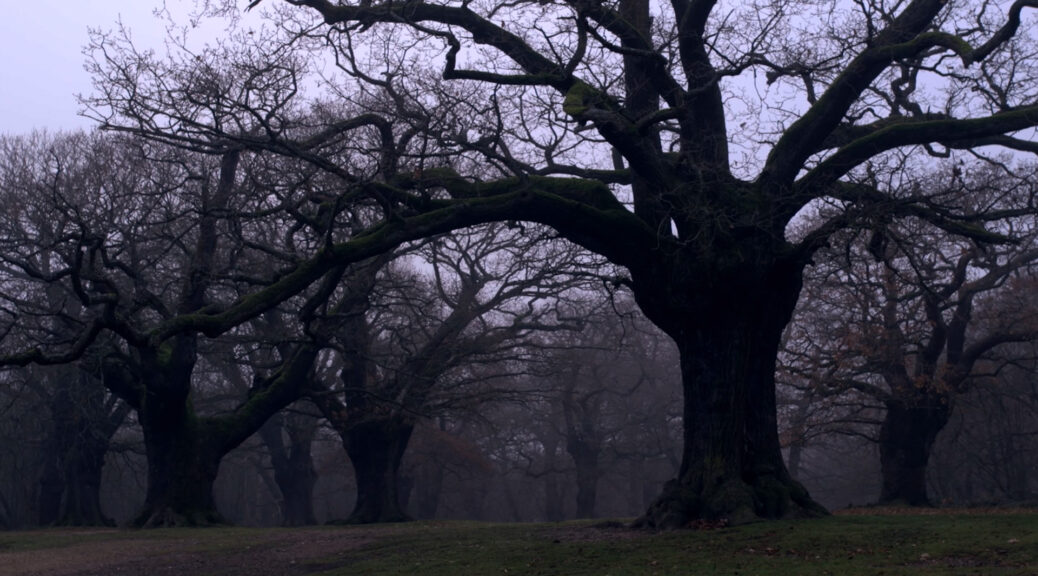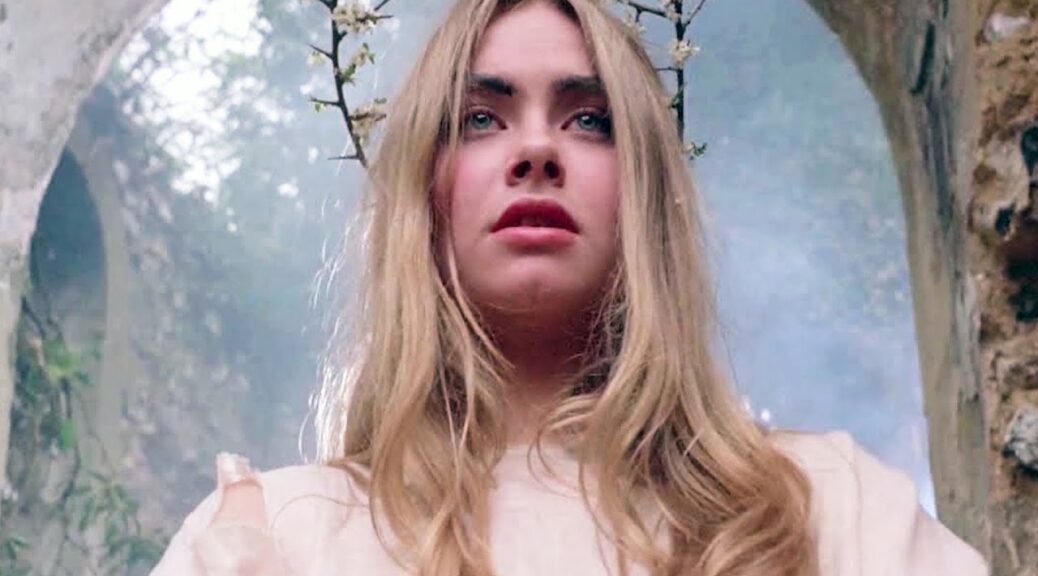Sideworld: The Haunted Forests of England
by Hope Madden
Jonathan Russell and George Popov have been exploring England’s haunted history for a number of years now. For their first feature collaboration, 2017’s Hex, the co-writers/co-directors took us into the woods for a spell.
In 2020 the pair co-wrote – this time with Popov flying solo behind the camera – a modern exploration of folk horror with The Droving. Once again, the two unveiled a spooky history where primitive behavior meets supernatural forces deep in England’s woods.
The filmmakers’ latest suggests a serious preoccupation at this point. Their documentary Sideworld: The Haunted Forests of England walks us through some of the spectral history that likely influenced their earlier dramatic efforts.
Where Kier-La Janisse’s recent doc Woodlands Dark and Days Bewitched dove into dramatic recreations of folk horror, Popov and Russell dig into the myths that inspired the fiction.
Russell writes, Popov directs and lends vocal talents to the fairly brief excursion into local folklore surrounding three different forests: Epping Forest, Cannock Chase and Wistman’s Wood. Their stories tell of pig beasts and howling dogs, weeping children and witches, tragic lovers and highwaymen.
They don’t stop with musty legend, though. Links to contemporary crime help to bridge the modern with the ancient in a way that sheds light into how tales of hauntings originate.
Though Popov narrates most of the film, he’s joined on occasion by Suzie Frances Garton and William Poulter. The film would have benefitted from more vocal variety, particularly since the filmmakers avoid any kind of talking-head footage. A little commentary from folklorists or experts would also have helped the film deliver a bit more relevance.
You can’t fault the spell Sideworld casts. Richard Suckling, who did such a beautiful job as DP for The Droving, again develops an atmosphere of beauty and dread. His cinematography mesmerizes from the opening moment. Paired with Matthew Laming’s haunting, whispering whistle of a score, the forests of Popov’s exploration easily convince of spectral menace.






